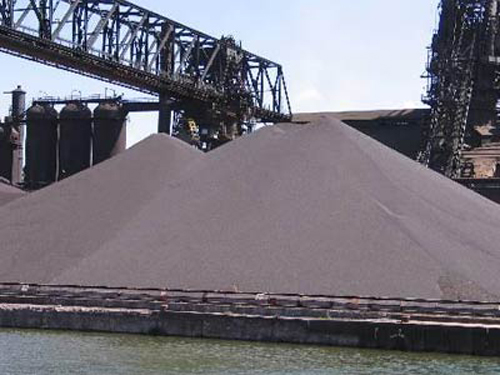After the New Year’s Day holiday, news came from India, the third largest source of iron ore imports in China. The country’s Central Commission for Consumption Tax and Customs said that since December 30, 2011, the export tariff rate for iron ore has been raised to 30%. Eight months ago, India had raised its export tariffs on iron ore fines and lump mines from 5% to 15% to 20%. “The main reason for the continuous increase in export tariffs is the increasing demand for iron ore in India, which has been continuously restricting exports.†On December 4, Qiuyue Cheng, an analyst of the steel spot trading platform Ximoto Shinkansen, told reporters that compared with the market where iron ore was in short supply in the past, the increase in tariffs for India's printing was not so significant for Chinese buyers. . Statistics show that from January to November 2011, China imported 620 million tons of iron ore, of which 68.31 million tons were imported from India, accounting for only 10%. Although the December statistics have not yet been issued, China's import of iron ore from India in 2011 was certainly lower than the 96.58 million tons imported in 2010. It is noteworthy that under the background of continuous decline in crude steel production, the iron ore import volume of China's steel mills at the end of the year at the end of the year showed an overall trend of increase. Qiu Yuecheng analyzed: “In December, domestic steel mills significantly increased their efforts in restocking, especially the increase in imported iron ore inventories. The lower price is the biggest driving force. In addition, some of the small and medium-sized mines in the north are shut down due to the weather, we judge The market price of iron ore will continue to fluctuate between 135-145 U.S. dollars per ton (CIF), which is still a certain profit margin for steel mills. Customs data showed that the average import price of iron ore in November was US$162.14 per ton, which was a drop of 7.6% from the previous month, and it was the largest drop this year. In October, 63.5% of the external disk price of printing ink once fell from 180 US dollars/ton to 129 US dollars/ton, a drop of nearly 30%, exceeding the market's previous expectations. For some time, the price of imported ore was lower than that of domestic mines, and low-grade foreign mines were even more. With price advantages, many companies increase the ratio of outside mines. Taking the steel plant in Hebei Province as an example, foreign mines with a capacity of 10 million tons account for 80%, steel mines with a capacity of 5 to 10 million tons account for 70%, and mines for steel plants below 5 million tons account for 50%. However, the low price iron ore brings benefits to steel mills in terms of profit performance, but there is lag. "The year before the market will maintain low output and low profits, at least until the first quarter to reflect." At the end of December, an analysis report of the Research Center for Economic Development of the Metallurgical Industry pointed out that the decline in the benefits of the steel industry and even the loss in recent months was a phase rather than a trend. "The sharp decline in steel prices in the short term and the relative lag in the cost of steel sales are the direct causes and main reasons for the decline in profits." The report pointed out that as ore price reduction factors continue to be reflected in the cost of steel (this process varies depending on the size of the company's inventory and turnover rate, generally 3-5 months), the profitability of the steel industry will gradually recover. EPS Sandwich Roll Forming Machine Steel Eps Sandwich Machine,Pu Steel Sandwich Panal,Sandwich Panal Willing International Co., Ltd. , http://www.hz-rollformingmachine.com